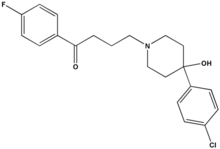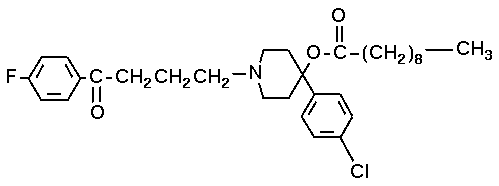Abstracts
Differential Effects of Haloperidol and Clozapine on Motor Recovery after Sensorimotor Cortex Injury in Rats. Goldstein LB, Bullman S. Neurorebabil Neural Repair. 2002; 16:321-325.
Several previous studies in the literature examine the effects of haloperidol on post brain injury recovery. The specific purpose of this study was to compare the relative effects of haloperidol and clozapine on motor recovery after unilateral sensorimotor cortex injury in rats. The authors hypothesized that haloperidol's antagonistic effects at the noradrenergic receptors would result in a relatively negative effect on motor recovery when compared to clozapine.
One hundred forty two Male Sprague-Dawley rats were obtained from Charles River Breeding Laboratories, Inc. in Raleigh, NC and housed in a controlled environment. Each rat was expected to negotiate a 2.5cm x 122cm elevated wooden beam surrounded by associated bright lights and white noise which served as avoidance and activating stimuli. Training on the behavioral testing apparatus was performed with each rat until it consistently traversed the beam without difficulty.
Following training, groups of 16 rats underwent right sided craniotomies. Surgical control rats also underwent the identical surgical procedure, but craniotomies were not performed. The day after surgery, rats (n= 3-4 per group) were given either a single dose of saline vehicle or a single dose of haloperidol (either 0.1, 1.0, or 10.0mg/kg;intraperitoneal). In separate experiments, another group of 16 rats (n= 3-4 per group) that underwent cortex surgery received either a single dose of saline vehicle or a single dose of clozapine (0.1, 0.5, or 1.0mg/kg; intraperitoneal). The effects of these drugs on beam-walking performance in sham cortex-lesioned rats were tested in separate experiments.
Behavioral testing was performed at 1 hour intervals for 6 hours following drug administration and then daily over the subsequent 12 days by an observer blind to the study hypothesis. Motor performance was rated on an ordinal 7 point scale.
Statistical analysis of data collected was performed using repeated-measures analysis of variance (ANOVAs), post-hoc Fisher least significant difference (LSD), Kruskalis-Wallis test, and the post-hoc Dunn procedure. The final results indicated that haloperidol impaired overall motor recovery (ANOVA F[3, 42], P=0.0()2) at each tested dose (Fisher LSD P > 0.01, respectively) with no significant differences between the doses (Fisher LSD P
Based on these findings, the authors conclude that a single dose of haloperidol given the day after sensorimotor cortex injury has a long-lasting, detrimental effect of subsequent functional locomotor recovery. The effect was present even at the lowest dose tested (0.1mg/kg) and was still evident 2 weeks later. In contrast to the effects of haloperidol, there was no detrimental effect of clozapine when given at low dose (0.1mg or 0.5mg/kg), with only the highest dose group differing from controls. Although the authors acknowledge the limitations of applying the conclusions of animal studies to clinical practice, they suggest that based on the results of this study and several prior studies, the use of low doses of clozapine may provide a safer alternative to haloperidol in the treatment of agitated patients recovering from strokes.
Jaime Rizzolo, Student UMDNJ
Morriston Memorial Hospital
Copyright Neurology Report Dec 2003
Provided by ProQuest Information and Learning Company. All rights Reserved



